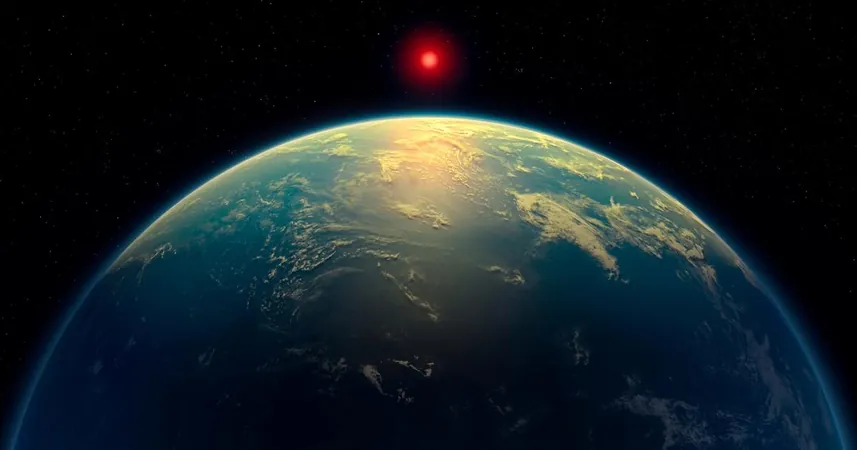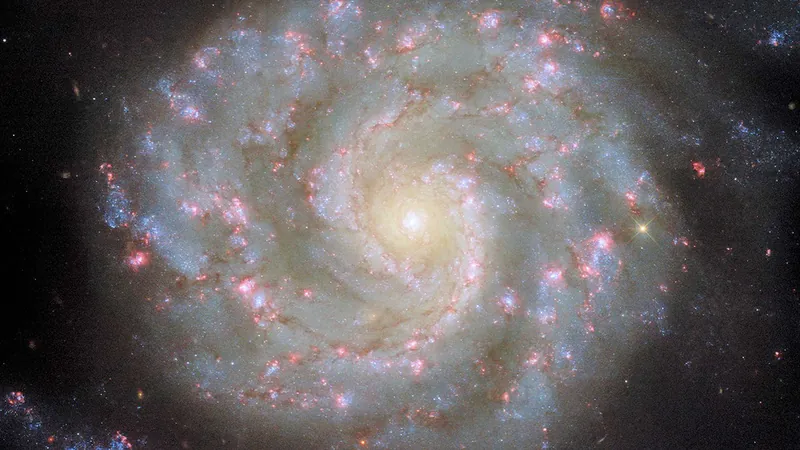
Could We Find Life on K2-18b? Here's What You Need to Know!
2025-04-21
Author: Yu
Exciting New Discovery!
Astronomers from the University of Cambridge have just dropped a bombshell: they’ve found the strongest evidence yet suggesting that life might exist beyond our beloved Earth! Using cutting-edge data from NASA's James Webb Space Telescope, researchers discovered atmospheric hints that tiny microbial organisms could thrive on K2-18b, a distant exoplanet visible in the constellation Leo.
What’s the Buzz About K2-18b?
Located over 120 light-years away, K2-18b has become the talk of the scientific community since its discovery in 2015. Classified as a Hycean exoplanet, this ocean-covered world is thought to have a hydrogen-rich atmosphere, making it one of the best candidates for supporting life. Could it be home to microscopic aquatic organisms like Earth's phytoplankton? This possibility is tantalizing!
Are There Aliens on K2-18b?
While we’re not talking about green little men, researchers find a strong chance that K2-18b could host alien life—likely in microbial form. They spotted molecules and gases in its atmosphere, which are telltale signs of life as we know it. If life exists there, it may resemble Earth’s tiniest life forms.
Understanding Exoplanets: What Are They?
Exoplanets are planets orbiting stars outside our solar system. There are over 5,800 confirmed exoplanets, with estimates suggesting billions more await discovery! K2-18b is a unique gem in this vast treasure trove.
Why the Fascination with K2-18b?
K2-18b's oceanic potential makes it a hot topic among astronomers. Previous observations hinted at water, but recent studies revealed even more intriguing signs—traces of important carbon-bearing molecules like methane and carbon dioxide.
The Goldilocks Zone: Just Right for Life!
K2-18b sits within the 'habitable zone,' where conditions are just right for water to exist in liquid form. This zone is often dubbed the "Goldilocks zone"—not too hot, not too cold!
K2-18b’s Size and Composition
This exoplanet is 8.6 times larger than Earth, featuring a radius 2.6 times greater. Its size suggests a mantle rich in high-pressure ice, similar to Neptune, making K2-18b what astronomers label a 'sub-Neptune'—a type of planet we haven't found in our solar system yet.
How Did They Make This Groundbreaking Discovery?
Teams utilized sophisticated instruments on the Webb telescope to analyze starlight filtering through K2-18b’s atmosphere. This study unveiled possible biosignatures—gases produced primarily by microbial life on Earth.
Where Else Are We Searching for Life?
Back home, Earth is one of just three planets alongside Mars and Venus that fall into the habitable zone. NASA is sending rovers to Mars and spacecraft to the icy moon Europa to investigate the possibilities of life beyond Earth.
The Quest for Extraterrestrial Intelligence!
Organizations like the Search for Extraterrestrial Intelligence Institute (SETI) are tirelessly combing the cosmos for any signs of life. Whether through astrobiology research or scanning for signals, humanity is committed to finding our cosmic neighbors.
Are Aliens Among Us?
Despite countless reports of unidentified aerial phenomena (UAP), no concrete evidence of extraterrestrial visits to Earth has emerged. The quest continues, with millions captivated by the mystery of what lies beyond our planet.
Final Thoughts: A Cosmic Journey Awaits!
The potential for life on K2-18b is just one part of a vast cosmic puzzle. With technology rapidly advancing, who knows what other secrets the universe may still hold? The search for extraterrestrial life is not just a scientific endeavor; it’s a voyage into the very fabric of existence!



 Brasil (PT)
Brasil (PT)
 Canada (EN)
Canada (EN)
 Chile (ES)
Chile (ES)
 Česko (CS)
Česko (CS)
 대한민국 (KO)
대한민국 (KO)
 España (ES)
España (ES)
 France (FR)
France (FR)
 Hong Kong (EN)
Hong Kong (EN)
 Italia (IT)
Italia (IT)
 日本 (JA)
日本 (JA)
 Magyarország (HU)
Magyarország (HU)
 Norge (NO)
Norge (NO)
 Polska (PL)
Polska (PL)
 Schweiz (DE)
Schweiz (DE)
 Singapore (EN)
Singapore (EN)
 Sverige (SV)
Sverige (SV)
 Suomi (FI)
Suomi (FI)
 Türkiye (TR)
Türkiye (TR)
 الإمارات العربية المتحدة (AR)
الإمارات العربية المتحدة (AR)